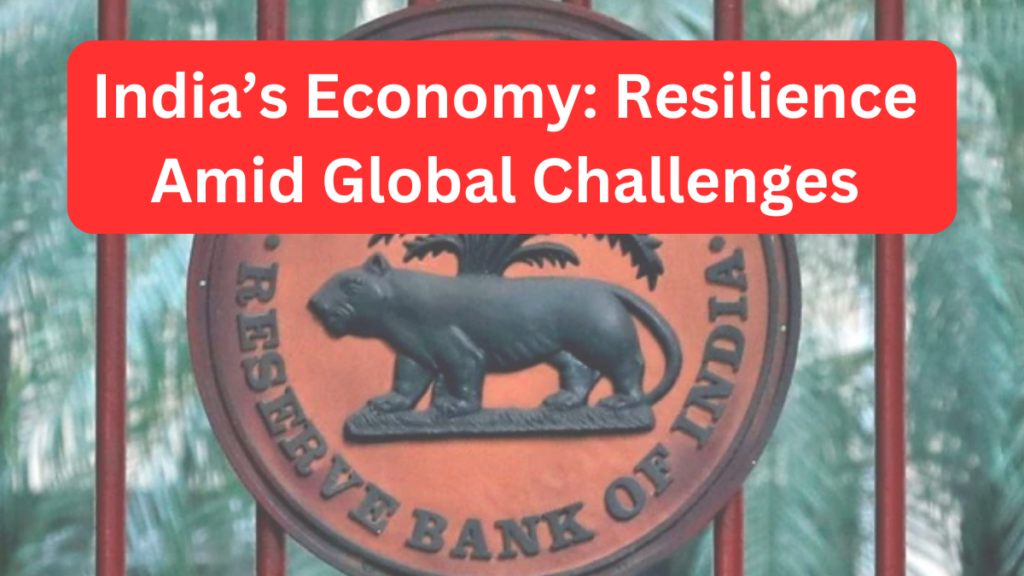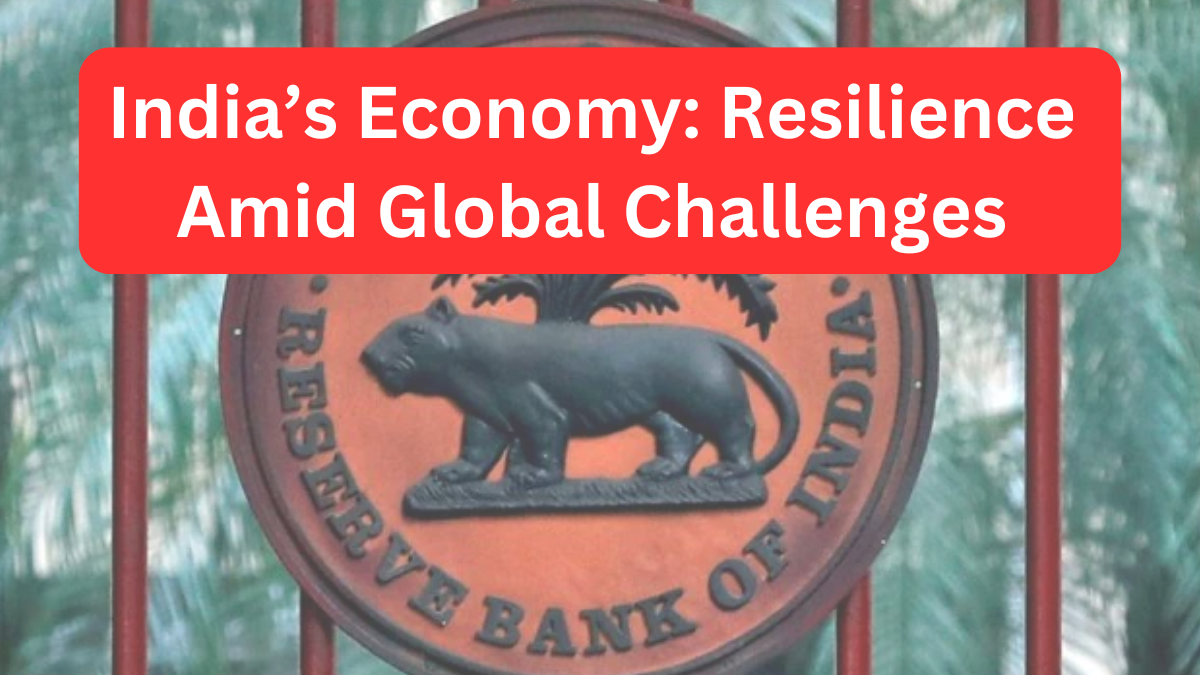The Indian economy continues to display remarkable resilience, driven by robust agricultural performance and rising domestic consumption. Despite global trade tensions and economic uncertainties, India remains on a steady growth trajectory, as highlighted in the Reserve Bank of India’s (RBI) latest ‘State of the Economy’ report.

Macroeconomic Strengths Fuel Growth
- Strong Domestic Demand – Consumption remains a major driver of economic activity.
- Steady Investment Activity – Private and public investments continue to boost economic momentum.
- Infrastructure Development – Ongoing policy-driven infrastructure projects enhance long-term growth prospects.
- Increased Government Spending – Fiscal measures support sustained economic expansion.
The RBI has projected India’s GDP growth at 6.7% for the 2025-26 fiscal year, reinforcing confidence in the nation’s economic outlook. The central bank also cut the Repo rate by 25 basis points to 6.25% in its February policy review, aiming to stimulate growth.
Challenges from Global Trade Uncertainty
While India’s economy is strong, the external environment presents significant challenges, including:
- Sustained Foreign Portfolio Outflows – Global uncertainties have impacted investor confidence.
- Escalating Trade Tensions – Tariff disputes and currency fluctuations create market volatility.
- Global Growth Slowdown – The ripple effect of slowing international economies may impact exports.
Despite these challenges, India’s external sector remains resilient, supported by robust services exports, which are less affected by global disruptions.
Inflation Trends: A Mixed Outlook
The RBI report highlights a decline in headline CPI inflation to a seven-month low of 3.6% in February 2025, primarily due to a correction in food prices. However, certain risks persist:
| Inflation Factors | Impact |
|---|---|
| Kharif & Rabi Production | High agricultural output stabilizes prices |
| Reservoir Water Levels | Adequate supply supports food availability |
| Commodity Price Volatility | Uncertainty in global markets may spike inflation |
| Weather Anomalies | Climatic factors could disrupt price stability |
Global Economic Uncertainties and Their Impact
The global economy in 2025 faces significant headwinds:
- Trade Wars & Tariffs – Rising tariffs can increase inflation and slow growth.
- Financial Market Volatility – Investor sentiment remains cautious amid uncertainties.
- US Economic Slowdown – Estimates suggest a 0.6 percentage point decline in US GDP growth for 2025 due to trade tensions.
Policymakers are navigating a complex landscape, balancing the impact of tariffs and currency depreciation against inflationary pressures.
Conclusion:
Despite global headwinds, India’s economy remains robust, supported by:
Strong domestic demand
Stable investment activity
Proactive government policies
Resilient external sector
While external uncertainties persist, India’s structural strengths—sound fiscal policies, digital transformation, and monetary framework—provide a solid foundation for long-term sustainable growth.
FAQs
1. What is India’s projected GDP growth for 2025-26?
India’s GDP growth is projected at 6.7% for the 2025-26 fiscal year, as per the RBI’s estimates.
2. How has inflation been trending in 2025?
Headline CPI inflation dropped to a seven-month low of 3.6% in February 2025 due to food price corrections.
3. What are the key risks to India’s economic growth?
Major risks include global trade tensions, financial market volatility, and commodity price fluctuations.
4. How is India’s external sector performing despite global trade issues?
India’s services exports remain resilient, providing stability amid weakening global trade and tariff uncertainties.
Click here to learn more
Pari is a passionate writer known for captivating stories that blend imagination and reality. Inspired by travel, history, and everyday moments, Pari crafts narratives that resonate deeply with readers.
